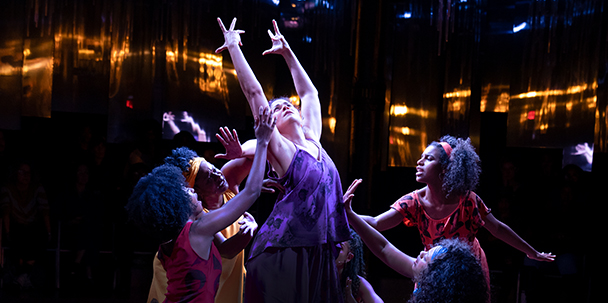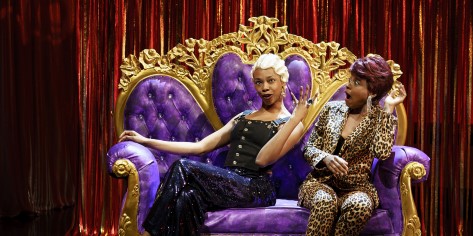Sixth in this series of interviews is Megumi Katayama.
What does the legacy of for colored girls… mean to you, and how has that impacted your work?
Being a non-white female theater artist/sound designer today still makes me feel like I'm a pioneer, and for colored girls… is a source of energy and faith for me that keeps me going. Ntozake was a true spearhead of POC female artists. The world in 2019 is still filled with attempts to divide and separate topics of race and gender, sex and rape, culture and ancestor, life and death, music and language... and how this choreopoem voiced them all as a whole on stage in 1976 inspires me everyday to live with full of my identity, and use the entirety of myself to work as a WOC theater artist.
What has your experience working on an all women of color design team been like?
It’s been wonderful! I felt the safeness and freedom to be myself from day #1 because I felt 100% included as who I am. Not only the design team but also the entire company is full of women of color, and the atmosphere of the first rehearsal was incredible. Everyone is such a wonderful collaborator, and it’s so clear that everyone is working for the team and for the show — nobody is just focusing on own department, and so much love and care are in the air. I'm truly grateful to be on this team.
What is your biggest challenge as a designer?
The balance of working toward big dreams with unlimited possibilities while being practical and realistic about what can be achieved with limited time and resources. Especially time... I don't know how often I wish I had a time turner. My secret challenge is to deal with the post-show depressions after the opening. The deeper I’m invested in the show, the harder it will be after it opens, so I try to focus on the next show and look for reunions.
Who/what inspires you in your designs?
I’m a listener and reader by nature, and a pretty sensitive person, so the world is full of inspirations for me. Usually, my design is inspired by and in response to what the others already created — rhythm and imagery from playwrights, texture and colors from visual designs, tone and music of actors' voices, the vibe of the theater venue, to give a few examples. Of course hearing directors’ visions is a big inspiration and a source of designs, and if there is dance and music, that’s a huge one too!
What is your advice to women of color interested in pursuing a career similar to yours?
Know that you have tons of skills that white straight men who grew up in the mainstream culture don’t have. I’ve always felt I was under-qualified for every single position because I don’t have the "white-American" skills, such as a presentational way of communicating ideas with a confident, loud voice. Only recently I'm starting to find a way to recognize that my way of being can be a positive thing. Also, believe people who believe in you! It's been hard for me to believe in myself, but I discovered that I get strength when I trust people when they believe in me. I'm very grateful for everyone who has given me that strength and I try to do the same.
This interview has been edited for length and clarity.
Photo by Christine Chambers













